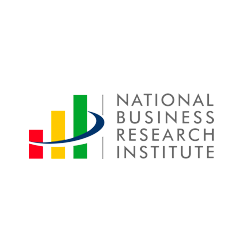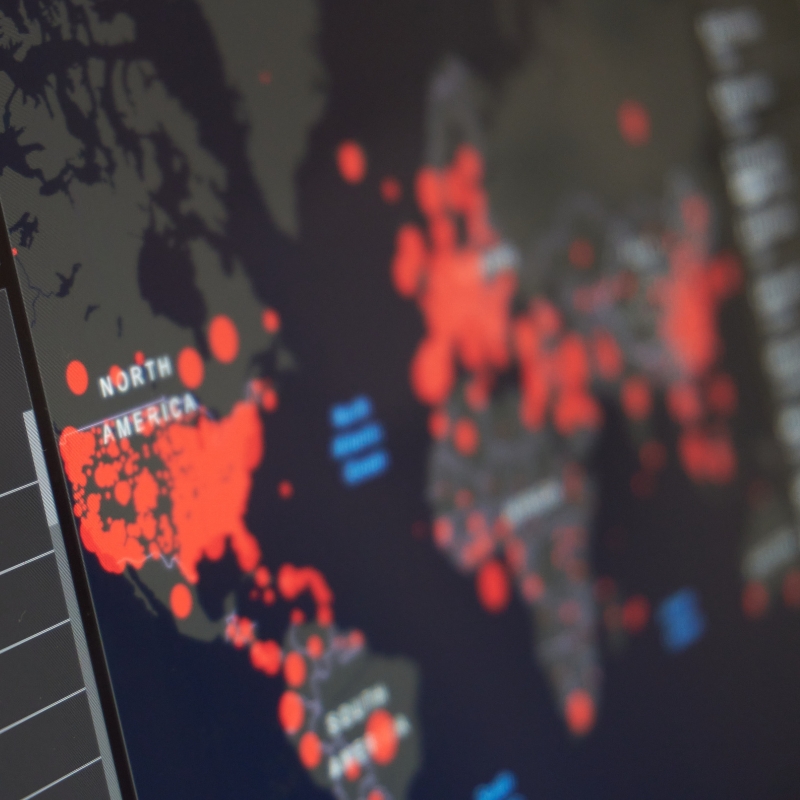French
Best-in-class French language solutions for any industry

Amongst the 200+ languages we support for our clients, English to French translation services (as well as localization services) are one of the most requested language combinations.
The reason for this is quite clear once we look at these figures:
- 76 million native speakers;
- 235 million fluent speakers who use the language on a daily basis;
- 77–110 million secondary speakers who speak it as a second language.
Indeed, French is the 18th most natively spoken language in the world and the 5th most spoken language by the total number of speakers, as well as the 3rd most studied language worldwide and the official language in 29 countries (many of which are in Africa).
Why choose LingPerfect for your French Web Localization
We are an established US-based company providing professional translation & localization services in over 200 languages, with a network of 10,000+ native linguists. Our QA processes for French translation services are backed by ISO 9001:2015 & 17100:2015 certifications.

10,000+ translators with subject-matter expertise
We guarantee an outcome that meets ISO standards and reflects the nuances of your original language as well as your field specifics. Our translation process involves certified translators and native French linguists who edit and proofread to ensure a top-notch translations.

ISO 9001:2015 & ISO 17100:2015 certified translation process
Our quality management system ensures that we deliver high-quality translations, while ISO 17100:2015 certifies that our translations meet the industry’s highest standards for accuracy. Our clients are confident that they will always receive quality translations from us.

Professional French translations for every type of document
LingPerfect network of translators provides the highest quality French translations for patent applications, website localization, financial, legal, and business documents, as well as marketing and advertising materials. You can expect timely delivery of your translations from LingPerfect specialists.
Fast and Professional French Translation Services
At LingPerfect, we ensure that every aspect of our French translation services is fast, secure, and accurate.
No matter what type of document you need to translate (a website, a brochure, a technical manual, a contract, or a video), our project managers and professional translators are here to provide support and advice, and guarantee that your expectations are fully met.
Whatever the language, we work with expert native translators with specializations in all subject areas, from Finance to Engineering, from Marketing to IT.

Professional ISO-certified French Translation Services for Any Industry

French: The Language of Diplomacy and Globalization
For centuries, statesmen and political personalities from all over the world learned to speak French, which was considered the language of diplomacy and international relations.
Today, English may have taken over in many realms. However, French is still the working language of international organizations such as the UN and the EU, the International Labor Organization, Amnesty International, Doctors Without Borders, the Red Cross, and Interpol.
When translating for international organizations, however, linguists need to use a language that will sound natural to any reader, whether they be French, Swiss, Canadian, Belgian, or North African. This “neutral” version of French is commonly referred to as Universal French or International French.
On-site & Remote Interpreting Solutions
With LingPerfect, you have access to world-class French interpreting services available 24/7, efficiently managing your interpreting assignment both on-site and remotely.
While in-person interpreters remain inevitable for certain situations, often there is no need to fly your interpreter across the globe anymore.
Indeed, thanks to technology and the Internet, the interpreting sector has become more flexible and cost-effective than ever.
Contact our interpreting team, and they’ll help you decide what type of interpreting solution (on-site or remote) is best for you.

A One-Stop for All Your French Language Needs:
Reliable French Translations You Can Trust
With 16 years of experience as leaders in the language service industry, we have provided certified French translation services to some of the world’s largest companies and organizations.
As a professional translation service, we deliver accurate translations for any industry and any document type needed.
How do we do this? By sticking to a rigorous quality assessment process that involves translating, editing, and proofreading, as well as terminology and translation memory management.
In other words, we provide our services so that you can focus on other (important) tasks while we do what we know how to do best: translating your documents.
Our clients say




French Language Facts

French outside of France
The first thing you need to know about French is that it is a Romance language, together with Spanish, Portuguese, Italian, and Romanian. But where is French spoken? In France, quite clearly. But not only.
French is the official language in 29 countries. Today, roughly 40% of French speakers live in Europe. The rest are found in Africa, Canada, and many other countries.
In particular, Africa is the continent with the most French speakers in the world.
The Language of the Revolution
At the time of the French revolution in 1793, an astonishing 75% of French citizens did not speak French as a native tongue, and each region had its dialect and patois.
Then, in 1794 it was decreed by law that not speaking French was “counter-revolutionary behavior” and no language other than French could be spoken.
In fact, up until the 1800s, it was easier to hear French spoken in Germany and Holland than in some parts of France.
Parlez-vous français? Yes, you do!
According to language specialists, approximately 45% of all English words have French origin. You basically speak French, and you didn’t know it!
A significant part of the French vocabulary now used in the English language was imported following the Norman Conquest of 1066 when England came under the administration of Norman-speaking peoples.
This includes words from several fields, including:
law: justice, judge, jury, court, case, etc.
diplomacy: embassy, treaty, passport, protocol, alliance, etc.
architecture: aisle, arcade, vault, niche, bay, etc.
cuisine (where shall we start?): mayonnaise, salad, trifle, fillet, croissant, cream… and the list is endless.
fashion: haute couture, prêt-à-porter, décolleté, lamé, etc.
Then again, think of words such as popular words such as femme fatale, or déjà vu, or tête-à-tête.

Numbing Migraine With Numbers

French is unique in the way numbers from 70 to 99 are expressed.
French language learners worldwide are inevitably puzzled when they discover that
70 becomes 60+10 (soixante-dix);
80 becomes 4X20 (quatre-vingt);
90 becomes 4×20+10 (quatre-vingt-dix);
All the numbers in-between are expressed accordingly: 77 (60+10+7 = soixante-dix-sept), 88 (4×20+8 = quatre-vingt-huit) and 99 (4×20+10+9 = quatre-vingt-dix-neuf).
Again, we have the French Revolution to blame for this partial vigesimal system, which imposed it as a way of unifying the counting system.
Is it the same all over the French-speaking world? You wish.
The Belgians and the Swiss are more logical in their approach and chose to use the Latin root for 70 and 90 (septante and nonante). The Belgians, however, humorous as ever, decided to make things more interesting by sticking to the French version with number 80. This means in Belgium you’ll hear septante (70), quatre-vingt (80) and nonante (90). The Swiss are more consistent and will say septante (70), huitante (80), and nonante (90).
French varieties and dialects

Languages can vary a lot when they are spoken in different parts of the world.
The French language is no exception, with several variations spanning many countries on five continents. Here are a few examples.
- Standard French – basically one that is spoken in Paris and the form usually taught to people who wish to learn the language.
- Belgian French – spoken in part (especially in the South) of Belgium by approximately 50% of the Belgian population, greatly influenced by the Dutch Language.
- Swiss French – the variety spoken in the French-speaking area of Switzerland called Romandy. Swiss French is characterized by some terms adopted from Arpitan (a language formerly spoken within the alpine communities of Romandy) and borrowed from Swiss and Standard German.
- Canadian French – Eastern Canada hosted the first French settlement in the Americas (also known as La Nouvelle France). There are two types of French spoken in Eastern Canada: Quebẻcois in Quebec (quite similar to Standard French in writing, less so in speech) and Acadian French in the province of New Brunswick on the coast, with a distinctive Anglophone tone.
- Creole – the version of the French language spoken in Louisiana (by less than 10,000 people). Sadly considered an endangered language, Creole is a blend of French and all the African languages of slaves.
- Caribbean French – again, a variety with a distinctive African flavor and elements of Spanish and Portuguese, and other colonial languages.
- African French – generic name comprising the varieties of the French language spoken by nearly 150 million people in Africa, across 34 countries and territories.
French reached Africa as a colonial language but has since evolved. Indeed, all African French varieties differ from Standard French, both in terms of vocabulary and pronunciation. The formal African French used in education, media and legal documents, however, is based on Standard French.
Why is French translation important?
English to French and French to English translation is needed in a wide range of industries, from business to tourism, from trade to politics, from science and to technology, etc.
French is a complex, multi-faceted language, with several regional varieties that make communication especially subtle and delicate.
As an industry expert in professional translation services, LingPerfect is the perfect choice for your business translation needs. Our experienced native-language translators will help you transform your words from French to English and back while retaining tone, context, and detail.
Get professional French translation services now
French Translation Tips
- Before you begin your translation project, you need first of all to understand what variety of French you need your text to be translated to.
Is it Canadian French or Belgian French? Standard French may be perfectly ok for an international website, but advertising your product in a French-speaking country other than France requires a different, localized approach.
Understanding the subtleties of the language, and choosing the appropriate words and cultural references can make all the difference in building a reputation and a relationship with customers.
- French is a lengthier language than English (taking up around 15–20% more words and – consequently – space). Don’t forget to keep this in consideration when localizing your brochures, app, or website to French.
- Mind the register. Language registers, such as they exist in the French language, don’t exist in English. French can be divided into up to 8 independent registers (!). The main registers are, however, 3: soutenu (formal), courant (standard) and familier (informal).
Each one of them has its own purpose and vocabulary and even, sometimes, its peculiar grammatical structure.When translating a document, you need to be aware of these differences and know who your audience is. In other words, it’s a job for a professional, native translator.

















